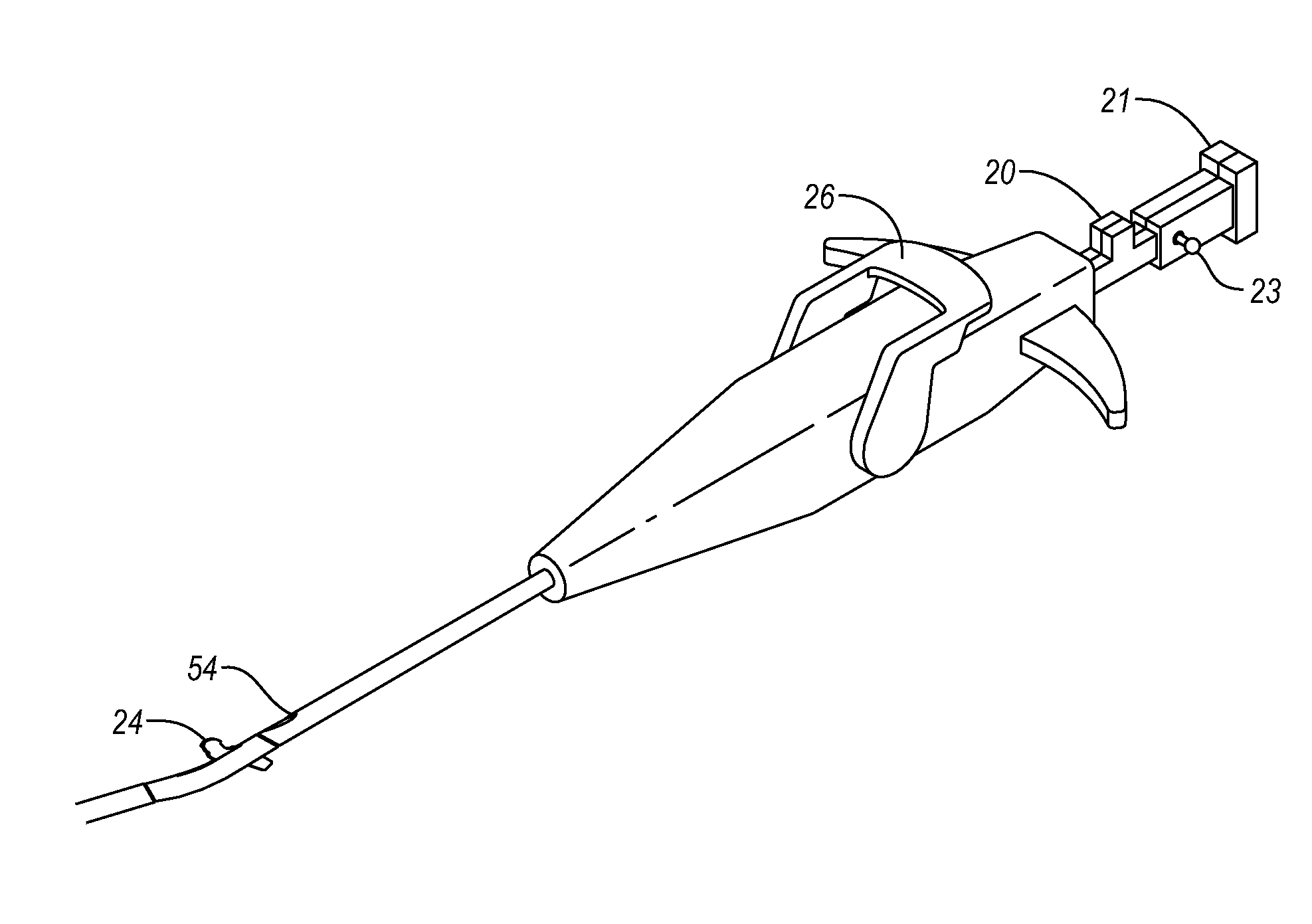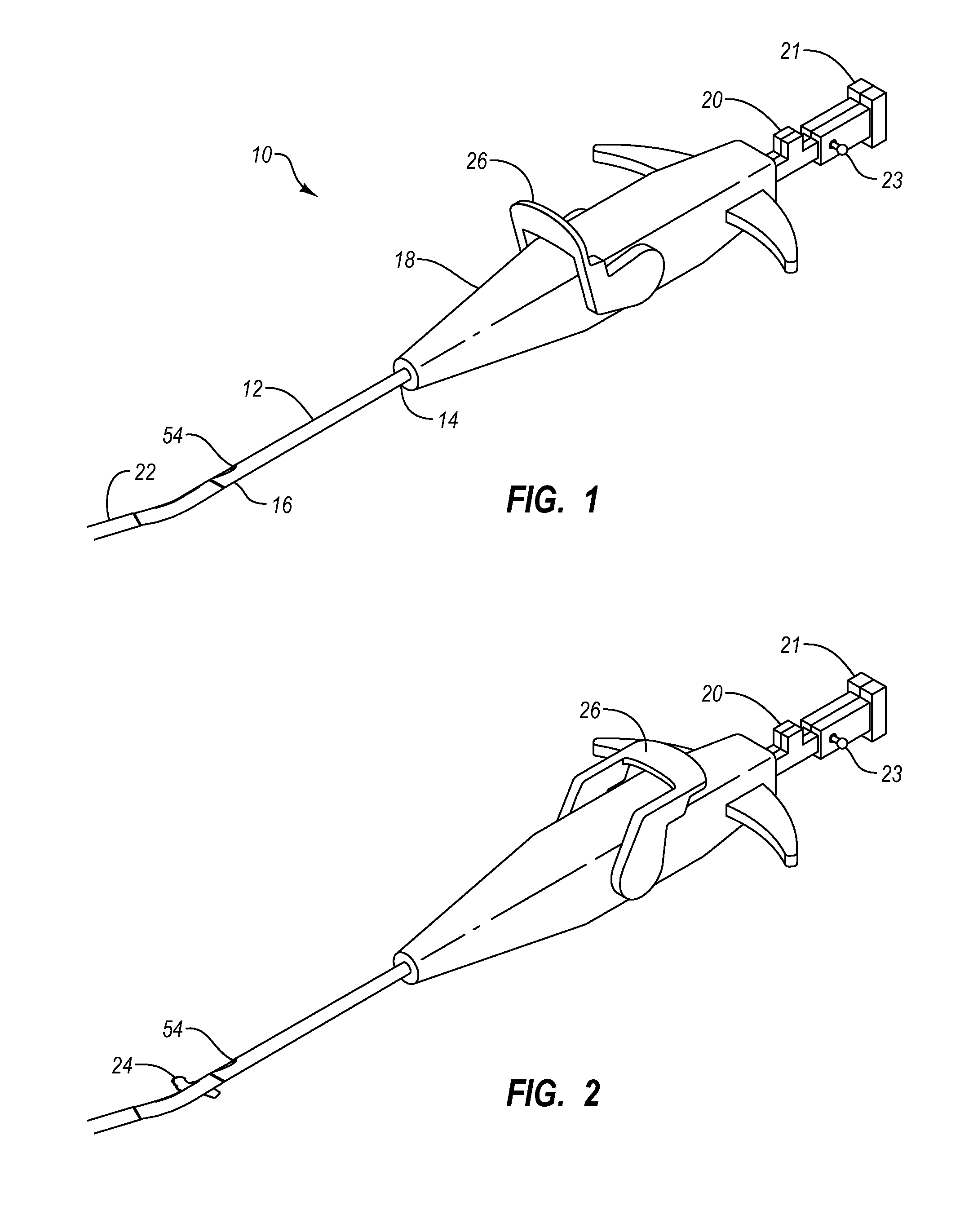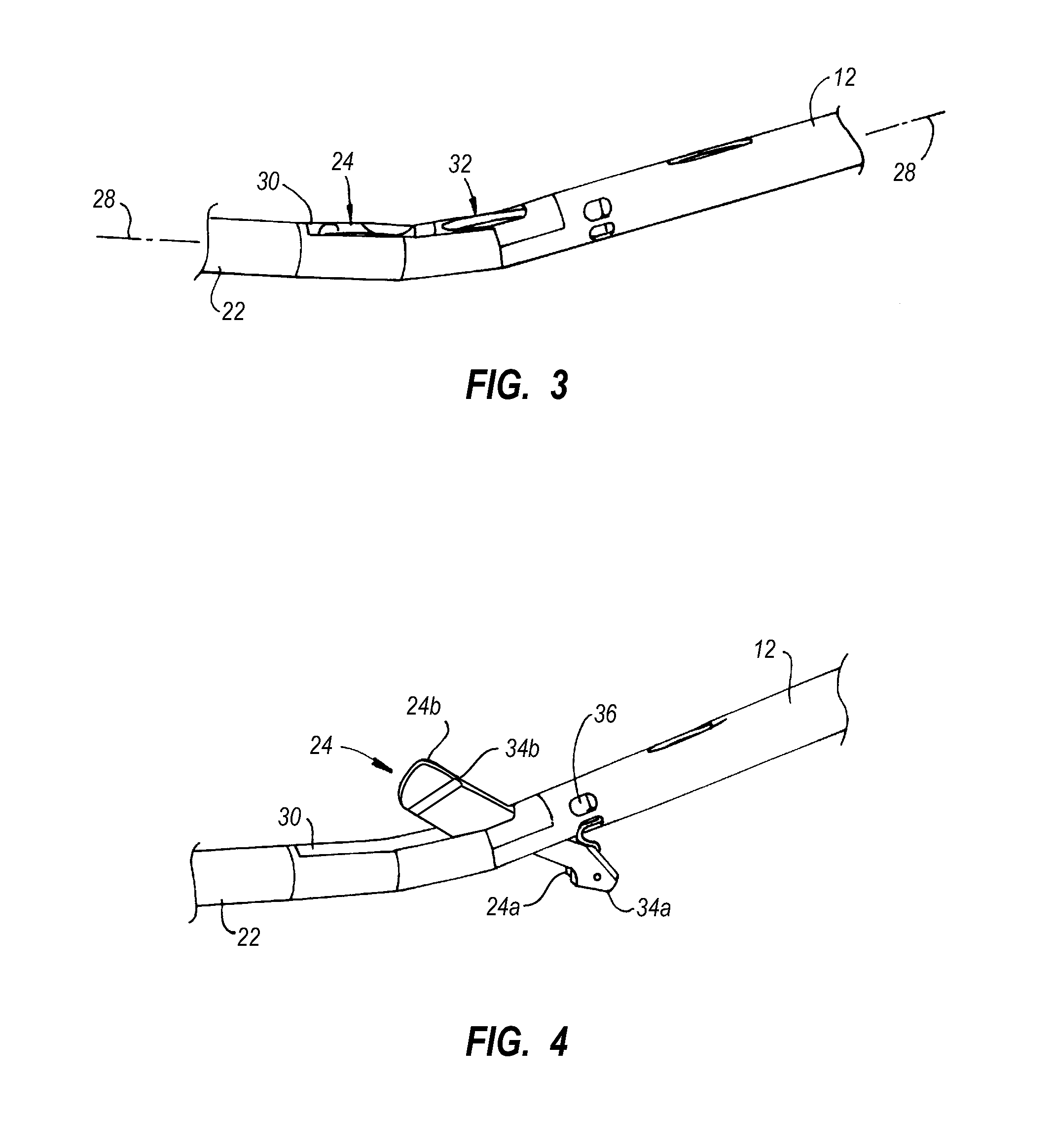System for closing a puncture in a vessel wall
a technology for a vessel wall and a puncture site, which is applied in the field of percutaneous closure of arterial and venous puncture sites, can solve the problems of increasing the time required before completion of compression techniques, relying on clot formation, and time-consuming, and achieves the effect of closing the puncture and constant tensioning for
- Summary
- Abstract
- Description
- Claims
- Application Information
AI Technical Summary
Benefits of technology
Problems solved by technology
Method used
Image
Examples
Embodiment Construction
[0040]A closure system is provided herein that includes a deployment device and a closure device. According to one example, the deployment device provides for repeatable and reliable deployment of wires within a vessel having a puncture therein. The wires have securing member, such as hooks, on the distal ends thereof that allow the distal ends of the wires to be anchored to a proximal wall of the vessel to be closed. As used herein, a hook shall be broadly understood to mean any structure configured to secure the wires to tissue, such as to secure a wire from moving proximally from engagement with the tissue. According to one example, the wires are deployed by advancing needles from outside the vessel to a location within the vessel. The needles carry the hooks. In particular, the hooks may be stored completely within the needles prior to deployment. A practitioner deploys the hooks by advancing the hooks beyond the distal ends of the needles. Thereafter, the hooks may be anchored ...
PUM
 Login to View More
Login to View More Abstract
Description
Claims
Application Information
 Login to View More
Login to View More - R&D
- Intellectual Property
- Life Sciences
- Materials
- Tech Scout
- Unparalleled Data Quality
- Higher Quality Content
- 60% Fewer Hallucinations
Browse by: Latest US Patents, China's latest patents, Technical Efficacy Thesaurus, Application Domain, Technology Topic, Popular Technical Reports.
© 2025 PatSnap. All rights reserved.Legal|Privacy policy|Modern Slavery Act Transparency Statement|Sitemap|About US| Contact US: help@patsnap.com



